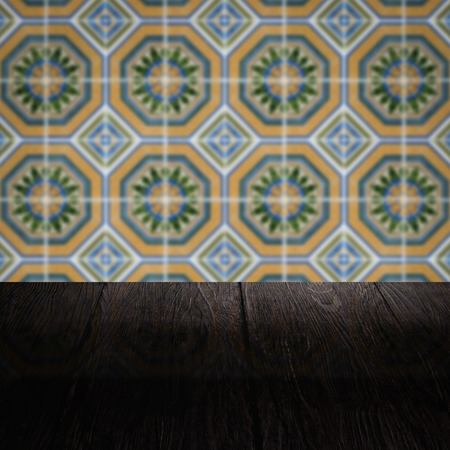Overview of Stone and Tile Flooring in the UK
Stone and tile flooring have long held a unique place in the fabric of British homes and public buildings. Rooted in centuries of architectural tradition, these materials are not only appreciated for their durability but also for their timeless aesthetic appeal. From grand country estates with flagstone kitchens to bustling high street shops adorned with ceramic tiles, stone and tile flooring represent a seamless blend of historical legacy and modern practicality. In today’s UK, such floors continue to be chosen not just for their robust nature, but also for their ability to complement both classic and contemporary interiors. This enduring popularity speaks to the versatility and adaptability of stone and tile, reflecting both a respect for heritage and an embrace of everyday functionality.
Historical Heritage and Regional Styles
Stone and tile flooring in the UK is deeply intertwined with the nation’s architectural heritage, shaped by centuries of local material use. Across the British Isles, regional stone types like Welsh slate and Yorkstone have long influenced both residential and public buildings, giving rise to unique flooring aesthetics that remain instantly recognisable today. The abundance of natural stone in certain areas led to its widespread adoption, not just for its durability but also for its ability to reflect a sense of place within the built environment.
Welsh Slate: A Legacy of Endurance
Welsh slate, renowned for its rich blue-grey hue and exceptional hardness, became a staple in Victorian and Edwardian homes throughout Wales and beyond. Quarrying in regions such as Snowdonia provided an enduring material that was both practical and visually striking. Its fine grain and subtle sheen made it ideal for grand entrance halls as well as utilitarian spaces like kitchens and sculleries.
Yorkstone: Defining Northern Character
Yorkstone, quarried from the historic county of Yorkshire, is celebrated for its warm buff tones and impressive resilience. Commonly used in public spaces—such as market squares, church aisles, and townhouses—Yorkstone floors are synonymous with northern English architecture. Its naturally riven surface provides grip underfoot, making it especially suitable for the UK’s often damp climate.
Comparative Table: Key Regional Stones
| Stone Type | Region | Main Characteristics | Common Applications |
|---|---|---|---|
| Welsh Slate | Wales (Snowdonia) | Blue-grey colour, fine-grained, highly durable | Kitchens, hallways, roofs |
| Yorkstone | Yorkshire | Sandy buff tones, riven texture, weather-resistant | Paving, public buildings, townhouses |
| Cotswold Limestone | Cotswolds (Southwest England) | Pale yellow-gold colour, soft texture | Cottages, farmhouses, patios |
| Purbeck Marble | Dorset (South England) | Mottled appearance, polishes well | Cathedrals, decorative flooring |
Enduring Influence on Modern Design
The legacy of these traditional materials continues to inform contemporary design choices across the UK. Homeowners and architects alike favour local stone not only for its sustainable credentials but also for its ability to evoke a timeless connection with Britain’s regional identities. By selecting native materials like Welsh slate or Yorkstone for modern renovations or new builds, there is a conscious nod to the past—a melding of tradition and practicality that remains at the heart of British flooring design.

3. Modern Adaptations and Practical Benefits
Contemporary British homes have embraced stone and tile flooring not merely as a nod to heritage, but as a practical solution for modern living. The fusion of classic aesthetics with the durability of these materials has become a defining feature in UK interiors. Homeowners are increasingly seeking ways to honour the architectural character of their properties while catering to everyday needs such as ease of maintenance and longevity. Stone and tile floors, whether laid in Victorian terraces or new-build flats, provide an elegant surface that withstands the unpredictable British weather, muddy boots, and busy family life with remarkable resilience.
The evolution of design technology has allowed for greater versatility in finishes and patterns, enabling homeowners to replicate the charm of flagstone kitchens or intricate Edwardian hallways with contemporary twists. This synergy between old and new is especially evident in open-plan living areas where underfloor heating—once considered a luxury—can now be paired effortlessly with natural stone or porcelain tiles for warmth without compromising on traditional style. Additionally, these flooring options are celebrated for their hypoallergenic properties and resistance to spills, making them ideal for households that prioritise both health and practicality.
In essence, modern British interiors use stone and tile flooring as a bridge between the past and present: they pay homage to centuries-old craftsmanship while ensuring that spaces remain robust, easy to clean, and adaptable to changing lifestyles. This thoughtful balance is at the heart of what makes stone and tile such enduring choices throughout the UK.
4. Installation Practices Suited to British Conditions
When installing stone and tile flooring in the UK, understanding the local climate and building practices is critical to achieving both durability and comfort. The UK’s variable weather—characterised by damp winters and cool temperatures—means that certain installation methods and materials are particularly suited for British homes.
Methods Commonly Used in the UK
Most stone and tile floors are laid using either a sand and cement screed or an adhesive directly onto a prepared subfloor. For older properties, especially those with uneven substrates, a self-levelling compound may be used first. Below is a comparison of common installation methods:
| Method | Best For | Notes |
|---|---|---|
| Traditional Wet Bed (Sand & Cement) | Period properties, uneven floors | Allows adjustment of tile level; longer drying time |
| Adhesive Over Screed | Modern homes, level surfaces | Quicker installation; requires flat subfloor |
| Floating Floor with Insulation Boards | Cold areas, underfloor heating | Improved insulation; compatible with electric heating mats |
Insulation for Colder Climates
The UK’s chilly conditions often call for underfloor insulation, especially in ground-floor installations. Rigid foam insulation boards are frequently used beneath tiles to reduce heat loss and improve energy efficiency. Where budgets allow, underfloor heating—either electric or water-based—is a popular upgrade, offering both luxury and practicality in draughty British homes.
Types of Insulation Materials:
- PIR (Polyisocyanurate) boards: High thermal resistance, commonly used in new builds.
- XPS (Extruded Polystyrene): Good compressive strength, suitable for renovation projects.
- Cork underlay: Natural option, provides some thermal benefit but less effective than rigid boards.
Moisture Management Considerations
The UK’s frequent rain and high humidity levels make moisture management essential. Damp-proof membranes (DPM) are standard on ground floors to prevent rising damp. In bathrooms and kitchens, waterproof tanking systems can be applied before tiling to guard against leaks. Proper ventilation must not be overlooked—extractor fans and trickle vents help mitigate condensation issues that can otherwise lead to mould growth behind tiles.
Key Points for British Homes:
- Always check for existing damp before starting installation.
- Use flexible adhesives and grouts to accommodate minor movement due to temperature fluctuations.
- If installing over timber floors, decoupling membranes can reduce the risk of cracking from subfloor movement.
This careful approach ensures stone and tile flooring remains practical, long-lasting, and well-suited to the unique demands of British homes.
5. Sustainability and Sourcing Concerns
The conversation around stone and tile flooring in the UK is increasingly shaped by sustainability and responsible sourcing. As environmental awareness grows, homeowners, designers, and contractors alike are seeking out options that tread lightly on the planet while delivering durability and style.
Eco-Friendly Sourcing: Beyond Aesthetics
Choosing sustainable materials means looking beyond the surface. Stone and tile may appear timeless, but their journey from quarry or kiln to home can vary widely in ecological impact. Many UK suppliers now offer products with clear provenance, including certifications for ethical extraction, minimal chemical treatments, and responsible waste management practices. Tiles made from recycled glass or ceramics are gaining traction as attractive alternatives, merging tradition with innovation.
Local Versus Imported Options
There’s a growing preference for locally sourced stone—such as Welsh slate or Cotswold limestone—not just for its heritage value but also for its reduced carbon footprint. Transporting heavy materials over long distances increases emissions considerably. By supporting British quarries and manufacturers, you not only lessen environmental impact but also help sustain regional economies and craft traditions. That said, imported stones like Italian marble or Spanish terracotta remain popular for their unique qualities; the key is balancing aesthetic desires with practical environmental considerations.
Environmental Implications in the UK Context
The UK’s construction sector faces mounting pressure to lower embodied carbon in all building materials. Stone and tile floors have the advantage of longevity—they rarely need replacing if properly maintained—but installation methods and adhesives can undermine their green credentials if not chosen carefully. Opting for water-based sealants and low-VOC adhesives can help ensure your floor remains as eco-friendly as possible throughout its lifespan.
In Summary
Sustainable stone and tile flooring isn’t just a trend—it’s becoming a baseline expectation among UK homeowners who want to honour tradition without compromising future generations’ well-being. By prioritising local sourcing, recycled content, and mindful installation choices, it’s possible to create beautiful floors that reflect both heritage and responsibility.
6. Everyday Living: Comfort, Upkeep, and Longevity
When considering stone and tile flooring in the context of British homes, it’s essential to take a pragmatic view on daily life. Comfort underfoot can vary greatly depending on the material; while some stones may feel cool and hard, particularly in the UK’s brisk climate, the addition of underfloor heating or well-chosen rugs can transform these surfaces into inviting spaces. Many households, especially in older properties, appreciate how stone and tile help maintain a consistent indoor temperature—cool in summer, yet capable of holding warmth during winter with proper heating.
Maintenance routines for stone and tile are refreshingly straightforward compared to other flooring types. A regular sweep to remove grit, paired with occasional mopping using pH-neutral cleaners, is generally sufficient. The British penchant for practical cleanliness means that these floors are favoured in kitchens, hallways, and even bathrooms where spills and muddy boots are common. Sealing natural stone is recommended to prevent staining—a task that typically needs doing only every few years.
Perhaps most compelling is longevity. Stone and tile floors have been known to last decades—sometimes outlasting the buildings themselves. In many historic UK properties, original flagstones or tiles still serve as a testament to their enduring nature. Unlike carpets or laminates that show wear quickly, properly maintained stone and tile develop a graceful patina over time, adding character rather than detracting from it. For busy families or those who appreciate long-term value, this durability makes them an astute choice.
In summary, while comfort considerations can be managed with thoughtful additions and modern technology, the low-maintenance requirements and impressive lifespan of stone and tile flooring align perfectly with British sensibilities—combining practicality with a respect for tradition.


